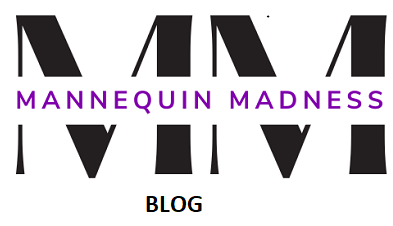
As much as I love being in the mannequin industry, I find it distressing that most retailers do NOT want mannequins to mirror what women really look like. They only want mannequins that are tall, thin and young – and in many cases often lacking any ethnic identity.
According to Marc Lacroix, manager of one of the world’s leading mannequin producers, European designers don’t buy black mannequins, plus-sized mannequins are irrelevant, and Saudi customers only buy the headless and limbless.
Mannequins have been around since the 18th century, mainly in the form of the dress-maker’s dummy, but it was not until the 20th century that fashion houses began showing their wares on the “static salespeople.” In recent years, there has been a growing demand within the U.S. for mannequins that better reflect the customer base.
“Black and Asian models have been doing fine for a long time in the US, and we have customers in Britain. But in France, Germany and Austria, forget it!” said Lacroix, who manages the Paris-based mannequin manufacturer Cofrad.
Cofrad also owns Patina-V in Los Angeles, a firm that specializes in ethnically diverse dummies (the image at left was taken at their L.A. warehouse). While different types of mannequins grace American store windows, European clients do not want their brand represented by darker—or larger—dolls.
Surprisingly, Asian companies also tend to buy mostly white mannequins. Lacroix claims they “prefer European-looking mannequins as they have a more universal appeal” to global labels and consumers alike. However, most couture clients want mannequins without heads or any identifying signifiers. More upscale companies do not want life-like mannequins, but rather skinny, faceless clothes hangers.
Lacroix does not seem to believe that anyone, in Europe or America, wants to buy mannequins that reflect actual sizing. The standard mannequin is about the same size as most models, and falls between a two and a four.
In 2007, Spain initiated a push toward featuring mannequins that better represented the average woman. In order to do this, they scanned the bodies of woman from around the country in laser-equipped booths. But Lacroix believes that this movement never truly caught on. “As for body shapes, every time we try different sizes, it fails. It’s not relevant,” he adds, “a mannequin has to have personality and has to sell the clothes.
” Apparently, fat mannequins – and we must assume, larger women – lack personality by the sheer virtue of their size. It almost sounds like someone has been reading too much Tucker Max.
